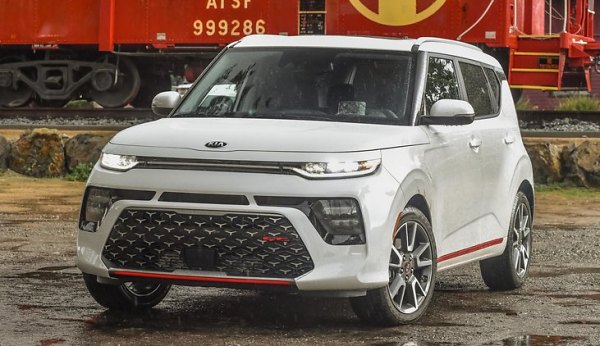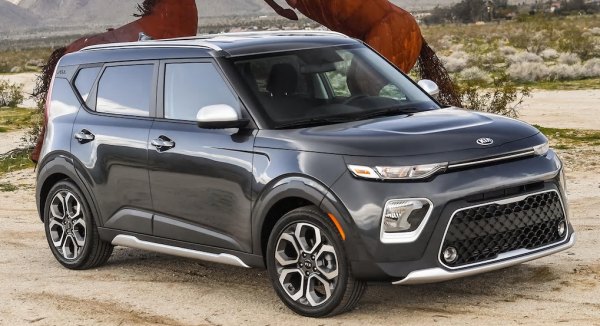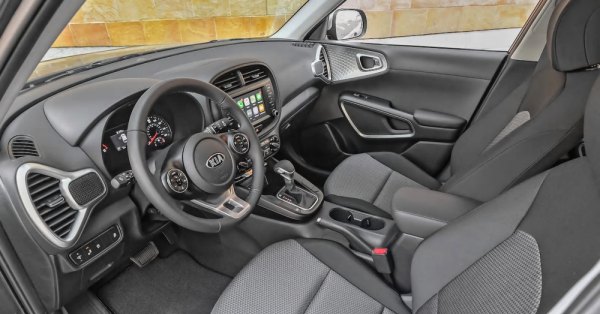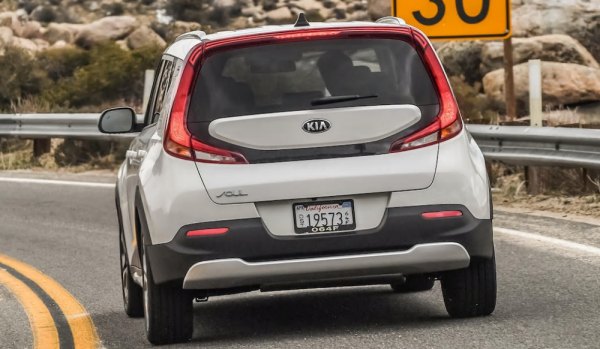Published
on 4
Jun 2019
|
All rights reserved.
|
|
|

|
|
Funky
styling continue to be the strength of Soul.
|
|
It is easy to understand
why we loved the last 2 generations of Soul: funky, stylish, spacious
and practical. Pretty quick, too. While they could not match the best
European hatchbacks for handling and refinement, they satisfy the needs
of 95-percentile motorists, and they feel more youthful than anything
built by the Japanese.
The latest Soul follows the same winning formula. It keeps the same
tall and funky proportion, but there are plenty of subtle changes to
make it even more stylish, such as slimmer headlights, blackened
C-pillars (hence a “floating roof”) and L-shape taillights. The bonnet
gets curvier at its leading edge, creating a sleeker perception. The
front grille gets larger and, when it mates with the optional rugged
body kits (on X-Line trim), makes the car very much like an SUV. It is
not, of course. Few small cars could have the same presence. More
radically styled than any European rivals, the new Soul will continue
to appeal to young drivers.

|
|
X-Line has
rugged body kits to mimic an SUV.
|
|
The new Soul is made larger again. Following a 20mm boost in the last
generation, it gets another 30mm extra wheelbase. Overall length is
extended by 55mm. So large that we have to reposition it from B- to
C-segment. Strangely, the extra wheelbase does not bring any more rear
legroom according to tape measure, but the Soul has always been
providing ample knee and head room for 4, so it is not a problem. The
extra dimensions do enlarge luggage space a little. Access to the boot
is made easier by a wider and deeper tailgate.
Just as before, the cabin is not high on build quality. Most plastics
are hard, if well
grained. However, it feels solid and durable. You get a 7 or 10.3-inch
touchscreen on the center console, depending on trims and how much you
pay. Its operation is responsive and easy to learn. Android Auto and
Apple Car Play are integrated flawlessly.

|
|
Nothing premium
here, but spacious and easy to use.
|
|
The new car is built on the platform of Kia Forte (K3), which is shared
with also
Hyundai Elantra. It rides on conventional strut suspension
up front and torsion-beam axle at the rear. The monocoque chassis
employs yet again more high strength steel, hot stamped steel and
structural adhesives to improve rigidity, though Kia did not reveal any
figures. In general, it rides and handles nicely. A crossover-like
ground clearance provides plenty of suspension travel, hence a
compliant ride. Meanwhile, body roll is not excessive for a car so
tall. The steering is quick and accurate, if quite numb and
over-assisted. The sportiest GT-line has a slightly stiffer suspension
setup, so it has slightly better roll control, which is perfectly
capable for the class – just don’t see it as a hot hatch. Its classier
tires, sized 235/45R18, offers bags of grip. The balance is biased
towards security though, with no intention to interact with the driver.
For driving, it is no Golf GTi or Mini, of course.
Refinement is certainly improved from the last generation, but there is
a little more wind noise at speed and tire roar
(when equipped with the wider tires) to remind you that it is not quite
as sophisticated as European hatchbacks.

|
|
Ride
and handling are nice but not class-leading, obviously.
|
|
The Soul shares its engines with Forte as well. The mass market model
is powered by a 2.0-liter Atkinson-cycle GDI engine with 147hp, mating
to 6-speed manual or Hyundai group's chain-driven CVT. While it makes
less power and torque than the old, Otto-cycle engine, it returns
better economy. Moreover, 0-60 mph taking just over 8 seconds is by no
means poor for a compact car. If you want more power, you may upgrade
to 1.6 GDI Turbo engine. It offers 204hp and 195 lbft of torque, good
for 0-60mph in less than 7 seconds. Nevertheless, there is a little
turbo lag low down, and the compulsory 7-speed dual-clutch transmission
sometimes interrupt the power flow with its wrongly timed gearchanges.
Moreover, the GT is priced close to the level of Golf GTI in the US
market, so it will be harder to sell.
The last powertrain is electric. Soul EV has been around since 2014.
Now the second generation has massively improved the technology. Its
front-mounted motor is upgraded, boosting output by nearly one fold to
201hp, accompanied with a remarkable 291 lbft of torque. Battery
capacity is also doubled from 32 to 64kWh, offering a driving range of
450km (280 miles) in WLTP cycles or 243 miles in EPA cycles, which is a
lot. Despite a kerb weight of 1.7 ton, the car is capable to do 0-60 in
7.2 seconds with some tire-smoking fun, yet it will commute and cruise
quietly. Coupling to a reasonable price (for an EV)
and low running costs, it is a smart buy.

|
|
Soul EV has
doubled power and battery capacity.
|
|
However, the downside for the EV is that it doesn’t turn as well as its
lighter siblings. Handicapped by the heavy battery, it feels bulkier,
rolls more, understeers more and the steering is even more disconnected
from the road. The ride suffers a little more from bumps, even though
the rear suspension has been upgraded to a multi-link setup. In fact,
the sweetest Soul is the leanest, cheapest version. Performance and
sophistication might be nice, but we’ll choose European hatchbacks
instead.
|
Verdict:     |
|